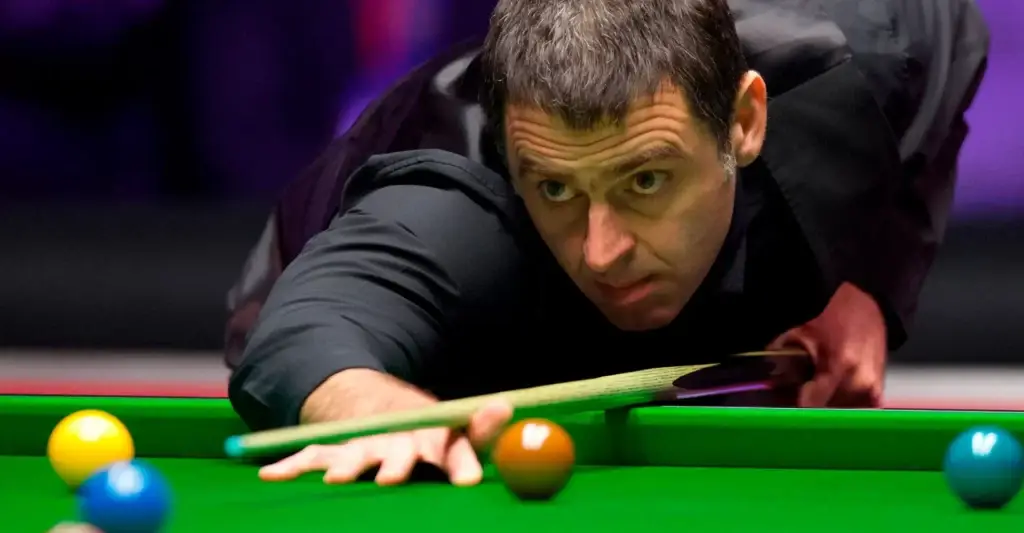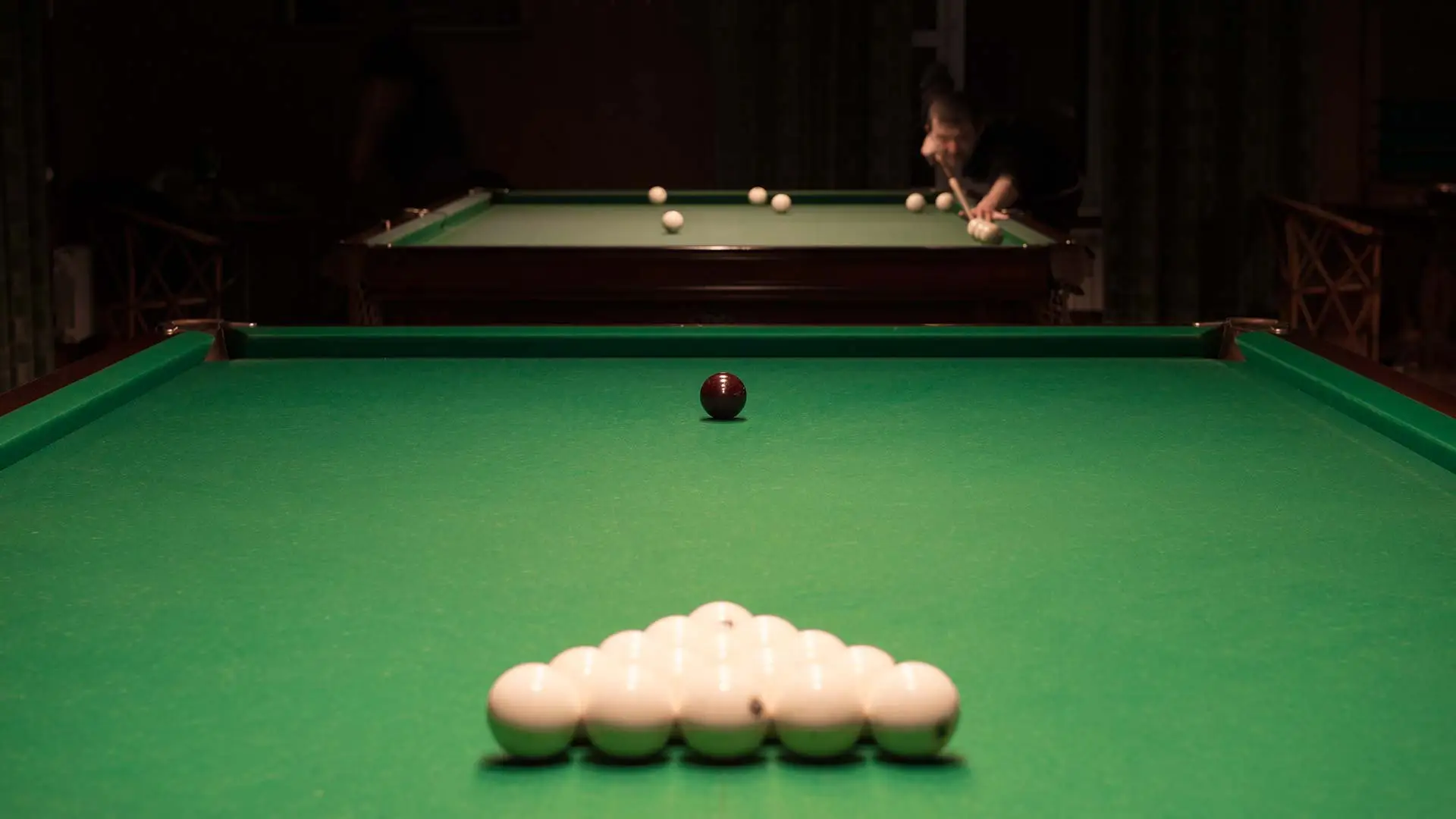Ronnie O’Sullivan is a name on the lips of all snooker fans, regardless of their experience level. He is not just another player, but the epitome of charisma and skill in the sport. A professional does not follow the rules, he makes them, and it is this trait that makes millions of fans around the world follow his every move at the table. There is no doubt that Ronnie is snooker’s rock star and his energy literally brings the room to life.
An unstoppable legend
Ronnie O’Sullivan is not just any athlete, he is a living snooker legend. His achievements are already written in golden letters in history, but his story is far from over.

Ronnie O’Sullivan: the road to the snooker stage
Ronnie O’Sullivan started playing snooker at the age of eight and attracted attention even then because of his extraordinary skills. At the age of 15, he got his first big break, immediately becoming one of the promising young players. But Ronnie not only met expectations, he far exceeded them. With his tenacity and unique approach, Ronnie O’Sullivan has become synonymous with excellence in snooker. A young genius who knew no compromises, he grew stronger every year, winning recognition and titles all over the world.
O’Sullivan’s snooker technique: art and science
His technique is amazing and inspiring at the same time. Every stroke is a perfect combination of power, precision and calculation. At the heart of Ronnie’s technique is an incredible ability to plan the position of the ball, following an intuition that seems unfathomable to other players. He never acts according to a formula and his strokes always have an artistic element of surprise. Using variation in stance and straight-line power, he literally plays like a machine, demonstrating filigree precision.
Elements of technique:
- Ball positioning – Each stroke involves precise calculation to optimally position the next ball.
- Variation of rackets – O’Sullivan uses different snooker rackets, allowing him to adapt to any situation at the table.
- Use of boards – O’Sullivan’s masterful use of boards to bounce the balls makes his shots particularly difficult for his opponents to predict.
- Speed of execution – his strokes are executed so quickly that opponents often don’t have time to realise his intentions.
- Multi-tasking and combination of strokes – the simultaneous execution of different strategies to control the entire table.
- Precision and calculation – strokes are always purposeful, eliminating chance and minimising the chance of error.
The king of snooker: influence and contribution
O’Sullivan is not just a tournament winner, he is the king of snooker who changed the perception of the sport. His influence goes far beyond his personal achievements. Thanks to Ronnie, the game has taken on a new level of spectacle: he draws spectators and creates an incredible show at the table. Many of today’s players are inspired by his style, his courage and his understanding of the game. He teaches young athletes not to be afraid to take risks and to trust themselves.
A unique style of play: skill and confidence
 Every O’Sullivan snooker match becomes a thrilling spectacle. His style is a combination of speed, confidence and the pursuit of perfection.
Every O’Sullivan snooker match becomes a thrilling spectacle. His style is a combination of speed, confidence and the pursuit of perfection.
O’Sullivan’s style of play – snooker in action
His style is nicknamed ‘The Express’ and for good reason. Ronnie’s speed at the table is amazing, even for experienced commentators. He thinks and acts with lightning speed, which often confuses his opponents. Sometimes he seems to see the game several steps ahead and makes precise and quick moves that allow him to control the whole process. Confidence in every move = exactly what makes him a true snooker rocket.
Features:
- Lightning-fast reactions – Ronnie analyses the situation in seconds, allowing him to make instant decisions.
- Confident shots – every shot shows his absolute confidence, allowing him to control the table.
- Non-stop play – the speed at which he moves and hits keeps his opponents alert.
- Flexibility in strategy – Ronnie uses different strategies depending on the situation, making his game extremely unpredictable.
- Psychological pressure on opponents – his fast pace and confident actions have a strong psychological effect on his opponents, who often lose control of the game.
- Lack of slowness – he never hesitates too long, allowing him to keep the pace of the game high and keep his opponents on their toes.
O’Sullivan’s achievements: snooker rocket in top form
The list of achievements impresses even the most sceptical critics. Ronnie has won six world titles, more than 20 ranking tournaments and has topped the world rankings several times. One of his key records is 15 minutes and 38 seconds for the fastest break in 1997, which is still considered one of the fastest in history. The achievements are inspiring, but even more impressive is his commitment to excellence, even after so many years at the top of his form.
O’Sullivan’s influence on contemporary snooker
Ronnie is not only inspiring a new generation of players, he is also changing the rules of the game. His approach to coaching and concentration has become a role model for many, and his outspoken speeches on the mental health of athletes encourage a positive attitude towards the sport among younger participants. O’Sullivan has made snooker more open and accessible to a wider audience.

The story continues
 The story continues and it is too early to end it. Ronnie O’Sullivan continues to perform at a high level, proving that age is just a number and that his skill and passion for snooker know no bounds. His current form, despite increasing competition, remains excellent and he is still capable of surprising. Ronnie inspires, leads and proves that excellence knows no bounds.
The story continues and it is too early to end it. Ronnie O’Sullivan continues to perform at a high level, proving that age is just a number and that his skill and passion for snooker know no bounds. His current form, despite increasing competition, remains excellent and he is still capable of surprising. Ronnie inspires, leads and proves that excellence knows no bounds.
 en
en  ru
ru  de
de  ar
ar  es
es  nl
nl  hi
hi  fr
fr  it
it  pt
pt  el
el 



